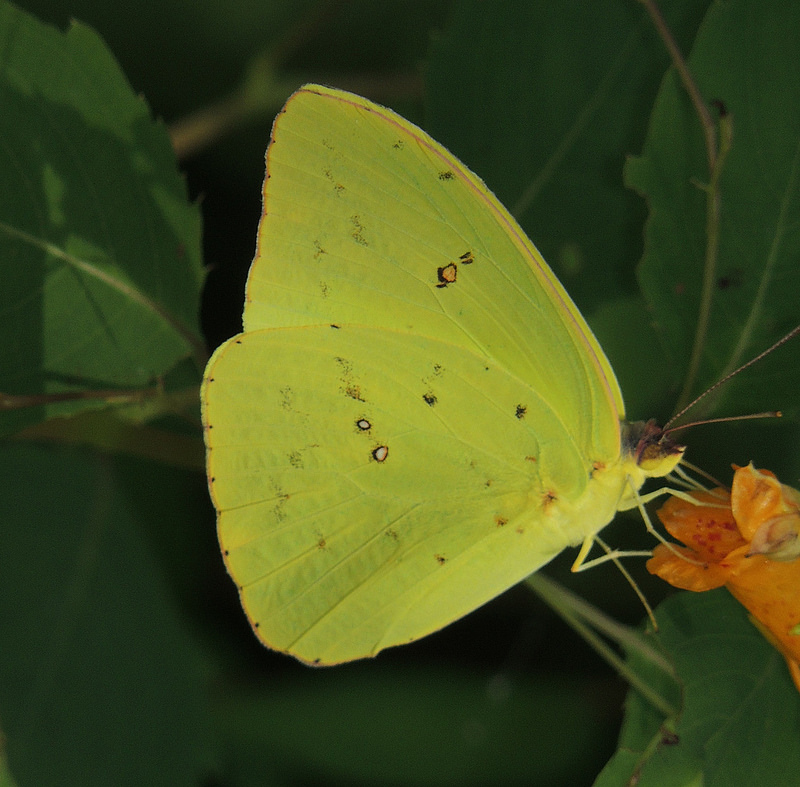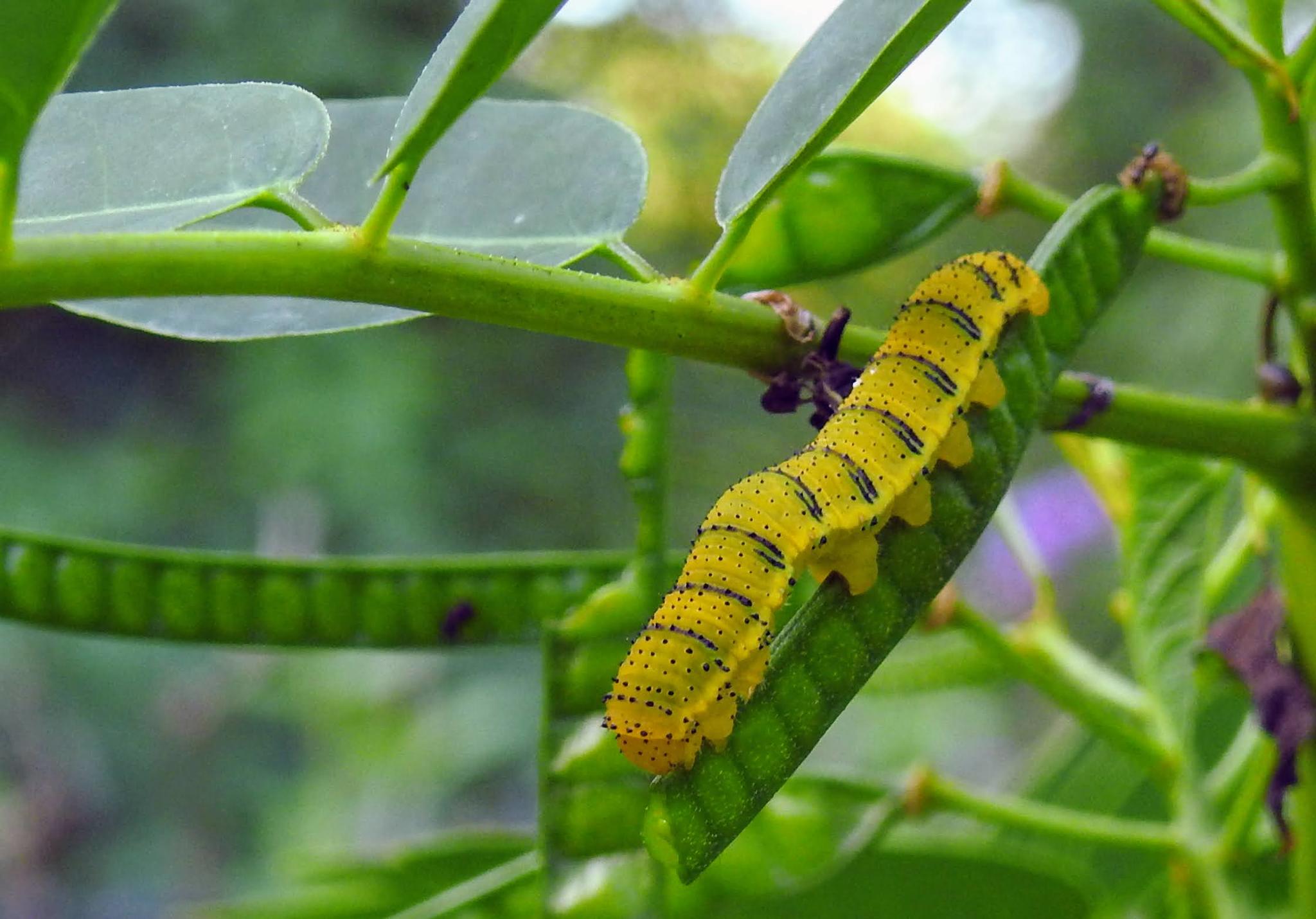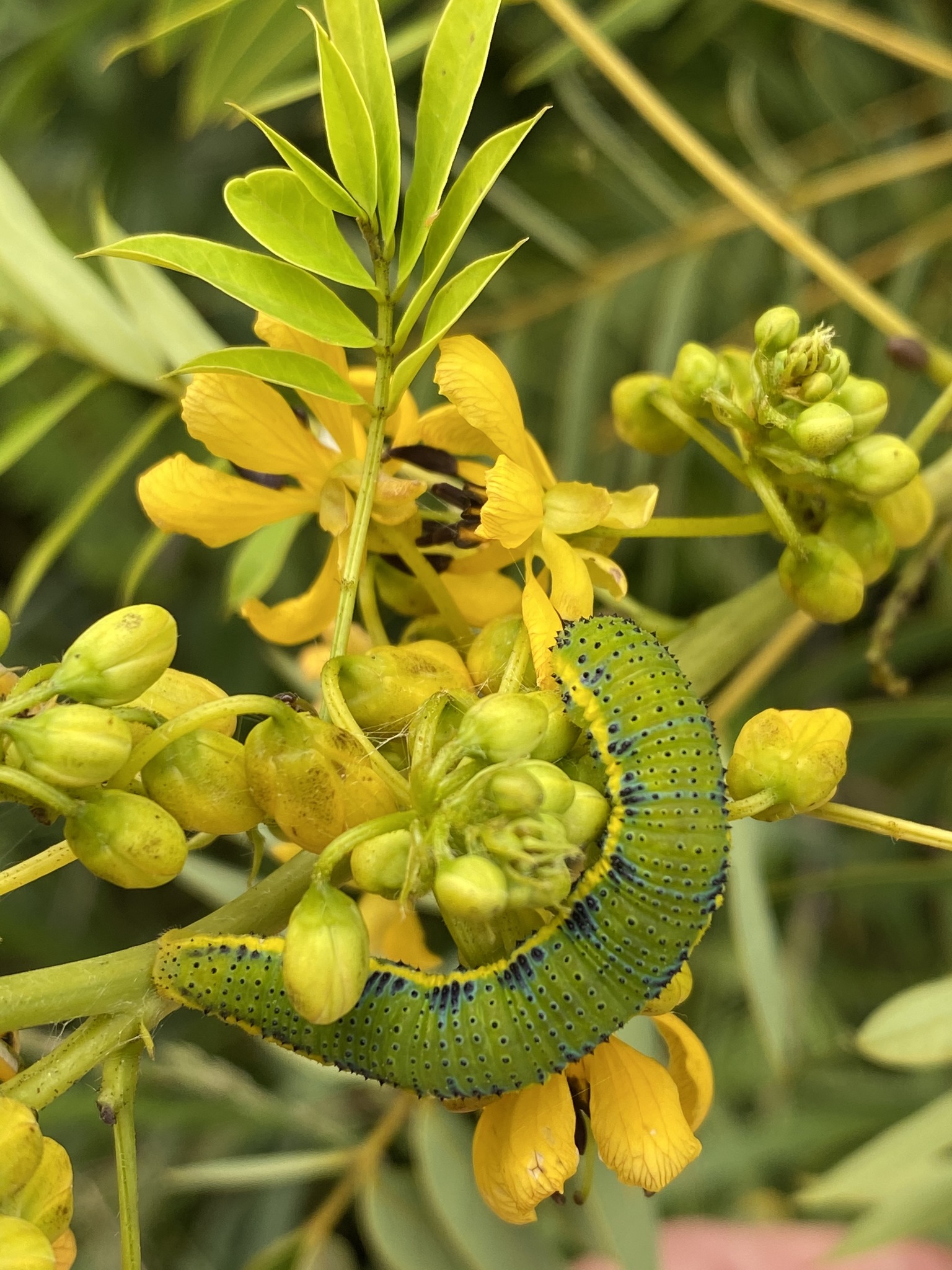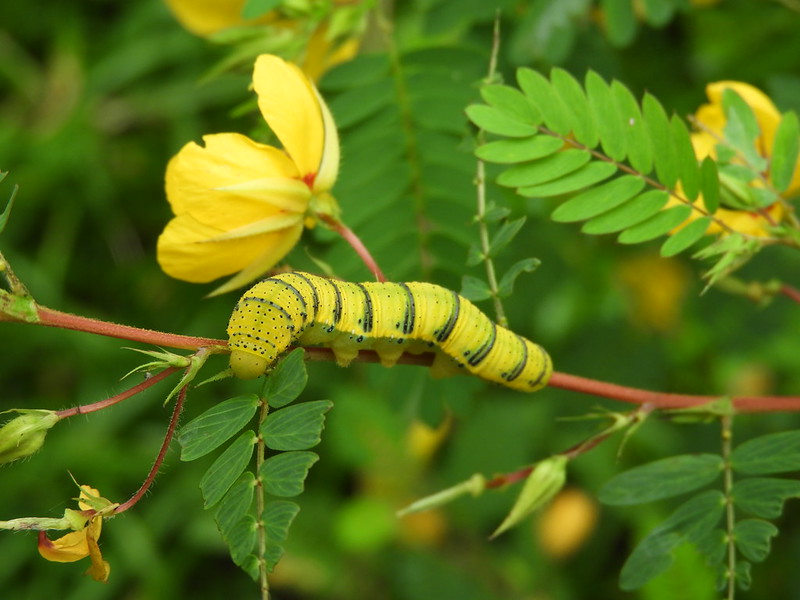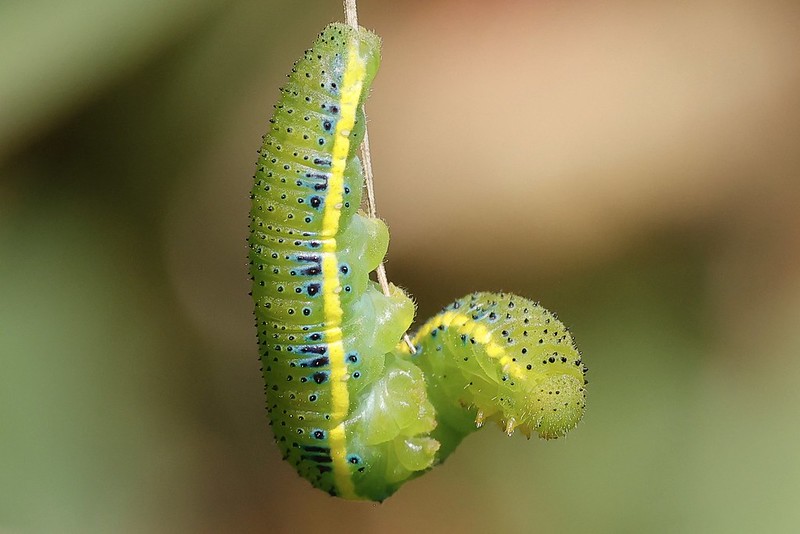Map Snapshot
























517 Records
Status
Cloudless Sulphur (Phoebis sennae) is a distinctively large, strong-flying powerful sulphur, prone to appearing north of its normal range. This butterfly has been recorded from almost every county in Maryland. Cloudless Sulphur primarily is found in Maryland from late summer into autumn, from July to October (Butterflies of Maryland: A Biological Summary and Checklist by Lynn Davidson & Richard Smith; Brock & Kaufman 2003; Allen 1997).
Relationships
Its host plants (Chamaecrista sp. and Senna sp.) occur widely across the state. It may not be able to survive the winters in most of the state.
Seasonality Snapshot
Source: Wikipedia
| Cloudless sulphur | |
|---|---|

| |
| Male P. s. sennae, Tobago | |

| |
| Female P. s. sennae, Tobago | |
| Scientific classification | |
| Domain: | Eukaryota |
| Kingdom: | Animalia |
| Phylum: | Arthropoda |
| Class: | Insecta |
| Order: | Lepidoptera |
| Family: | Pieridae |
| Genus: | Phoebis |
| Species: | P. sennae
|
| Binomial name | |
| Phoebis sennae | |
| Subspecies | |
|
Three, see text | |
| Synonyms | |
|
Papilio sennae | |

Phoebis sennae, the cloudless sulphur, is a mid-sized butterfly in the family Pieridae found in the Americas. There are several similar species such as the clouded sulphur (Colias philodice), the yellow angled-sulphur (Anteos maerula), which has angled wings, the statira sulphur (Aphrissa statira), and other sulphurs, which are much smaller. The species name comes from the genus Senna to which many of the larval host plants belong.
Distribution
[edit]Their range is wide, from South America to southern Canada, in particular southwestern Ontario.[4] They are most common from Argentina to southern Texas, Georgia, and Florida, but are often visitors outside this range becoming more rare further north.

Habitat
[edit]The common habitats of this butterfly are open spaces, gardens, glades, seashores, and watercourses.
Diet
[edit]The adult butterfly feeds on nectar from many different flowers with long tubes including cordia, bougainvillea, cardinal flower, hibiscus, lantana, and wild morning glory. The larvae also feed on sennas and partridge peas.[5]
Senna hebecarpa (American senna) is a larval host and nectar source for the cloudless sulphur butterfly in the Eastern United States.[6]
Life cycle
[edit]The breeding season is dependent on the climate of the area, from midsummer to fall in the cooler areas, to year-round where the climate is warmer.
Egg
[edit]The cloudless sulphur starts off as a pitcher-shaped white egg. Eventually it will turn to a pale orange. The egg stage lasts six days.
Caterpillar
[edit]
Once the egg hatches, a caterpillar emerges that is yellow to greenish, striped on sides, with black dots in rows across the back. The host plant may be sensitive peas (Chamaecrista),[7] sennas (Senna),[8] clovers (Trifolium), or other legumes (Fabaceae). The caterpillar will usually grow to a length between 41 and 45 mm (1.6 and 1.8 in).
Chrysalis
[edit]The caterpillar will form a chrysalis that is pointed at both ends and humped in the middle. The chrysalis will be either yellow or green with pink or green stripes. From the chrysalis comes a medium-sized butterfly (55–70 mm (2.2–2.8 in)) with fairly elongated but not angled wings.
Adult
[edit]The male butterfly is clear yellow above and yellow or mottled with reddish brown below and the female is lemon yellow to golden or white on both surfaces, with varying amounts of black spotting along the margin and a black open square or star on the bottom forewing. Wing spans range from 4.8 to 6.5 cm (approximately 1.9
to 2.6 in)[7].
-
Female
-
Male
-
Caterpillar
-
Yellow version of caterpillar feeding on senna tree, Vista, California
-
Chrysalis on senna tree, Vista, California
-
Male P. s. marcellina
in Panama, some males are unmarked
Subspecies
[edit]Listed alphabetically:[9]
- P. s. amphitrite (Feisthamel, 1839) – Chile
- P. s. sennae or P. s. eubule[4] – Jamaica, South Carolina, Kansas, Virginia, Florida, Cuba
Former subspecies
[edit]- P. s. marcellina (Cramer, [1779]) – Mexico, Uruguay, Galapagos, Suriname, Honduras, Brazil, Argentina, Bolivia, Peru - elevated to full species status as Phoebis marcellina in 2020[10]
References
[edit]- ^ "NatureServe Explorer 2.0 Phoebis sennae Cloudless Sulphur". explorer.natureserve.org. Retrieved 3 October 2020.
- ^ Walker, A. (2020). "Phoebis sennae". IUCN Red List of Threatened Species. 2020: e.T173004589A173004624. doi:10.2305/IUCN.UK.2020-3.RLTS.T173004589A173004624.en. Retrieved 18 November 2021.
- ^ Srygley, R. B. (2001-09-01). "Sexual differences in tailwind drift compensation in Phoebis sennae butterflies (Lepidoptera: Pieridae) migrating over seas". Behavioral Ecology. 12 (5): 607–611. doi:10.1093/beheco/12.5.607.
- ^ a b Cloudless Sulphur, Butterflies of Canada
- ^ C., Minno, Marc (2010). Butterflies of central florida : a guide to common and notable species. [Place of publication not identified]: Quick Reference Pub Inc. ISBN 978-0982885604. OCLC 943772335.
{{cite book}}: CS1 maint: multiple names: authors list (link) - ^ Lady Bird Johnson Wildflower Center Native Plant Information Network: Senna hebecarpa
- ^ a b Hall, Donald; Minno, Marc; Walker, Thomas (April 2012). "Cloudless Sulphur Phoebis sennae (Linnaeus) (Insecta: Lepidoptera: Pieridae: Coliadinae)". University of Florida IFAS Extension. Retrieved 28 April 2023.
- ^ Clark, Dale. "Phoebis sennae". Dallas County Lepidopterists' Society. Retrieved 2008-07-21.
- ^ Phoebis sennae, funet.fi
- ^ Núñez, Rayner; Genaro, Julio A.; Pérez-Asso, Antonio; Murillo-Ramos, Leidys; Janzen, Daniel H.; Hallwachs, Winnie; Wahlberg, Niklas; Hausmann, Axel (April 2020). "Species delimitation and evolutionary relationships among Phoebis New World sulphur butterflies (Lepidoptera, Pieridae, Coliadinae)". Systematic Entomology. 45 (2): 481–492. Bibcode:2020SysEn..45..481N. doi:10.1111/syen.12408. ISSN 0307-6970.
External links
[edit]- Cloudless Sulphur, Butterflies of North Carolina Online
- Video of Phoebis Sennae pupating and emerging, on YouTube
- Cloudless Sulphur, Butterflies and Moths of North America
- Phoebis sennae on the UF / IFAS Featured Creatures Web site








